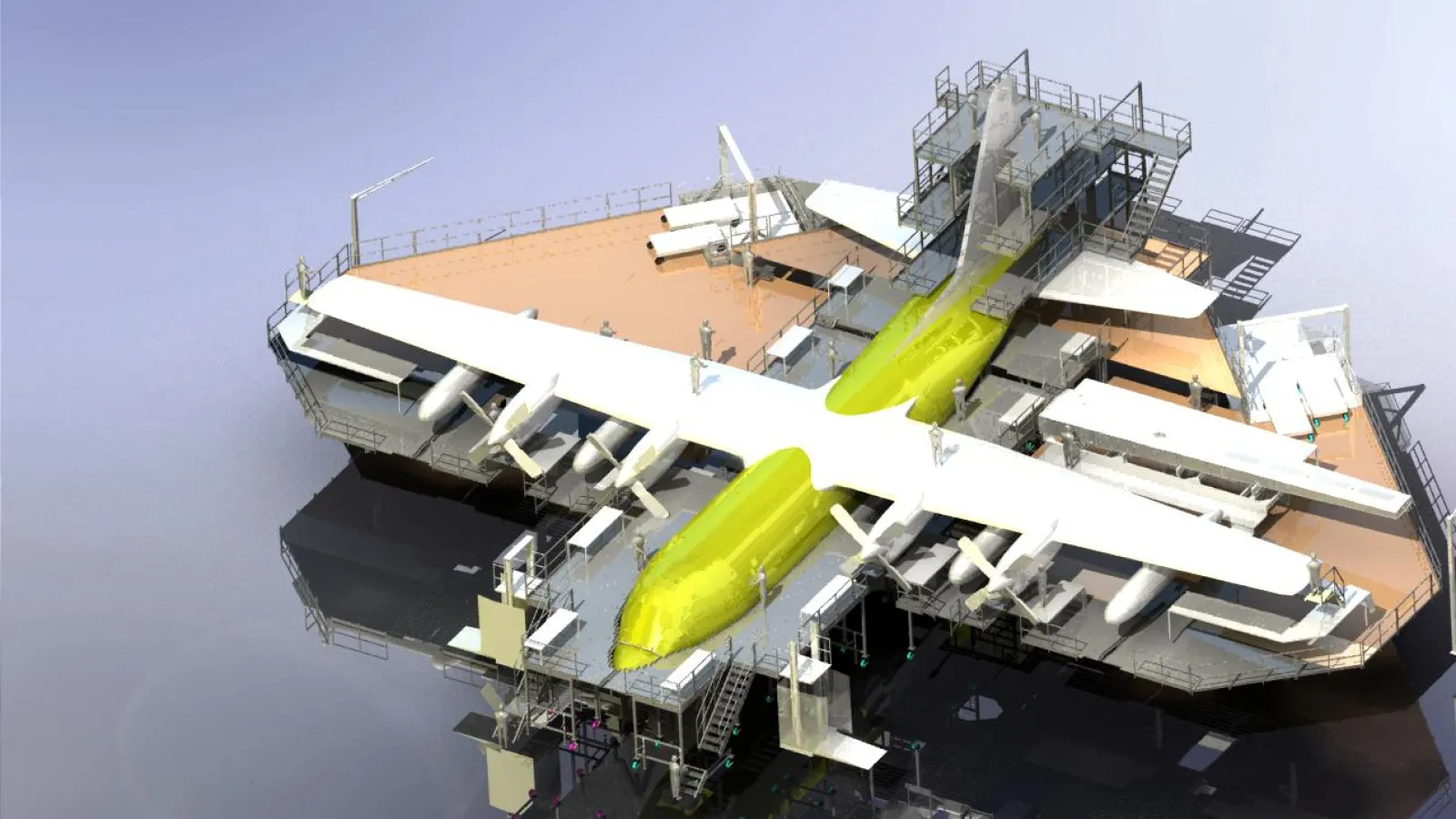
Zoning for Strategic Advantage
Adopting C1D1 Zoning Practices to Support the U.S. Air Force in the Great Power Competition
What is C1D1 Zoning?
Aerospace companies like Boeing and Airbus follow well-established electrical safety classifications for hangars, guided by standards such as the National Electrical Code (NEC). The strictest classification, Class 1 Division 1 (C1D1), applies to areas where explosive or ignitable concentrations of gases, vapors, or liquids are present. It requires all structures and equipment in designated areas to be explosion proof. Civilian aerospace companies typically apply these classifications selectively, with less stringent classifications, such as Class 1 Division 2 (C1D2), applied as the distance from high-risk areas like aircraft engines increases.
What the USAF does.
The USAF frequently classifies entire hangars as C1D1, regardless of the actual risk levels in different parts of the hangar. This blanket approach contrasts with the more nuanced civilian approach of classifying specific zones based on the level of hazard. The USAF's approach limits the adoption of advanced technologies that are not available with
C1D1 -compliant components.
What the Private Sector does.
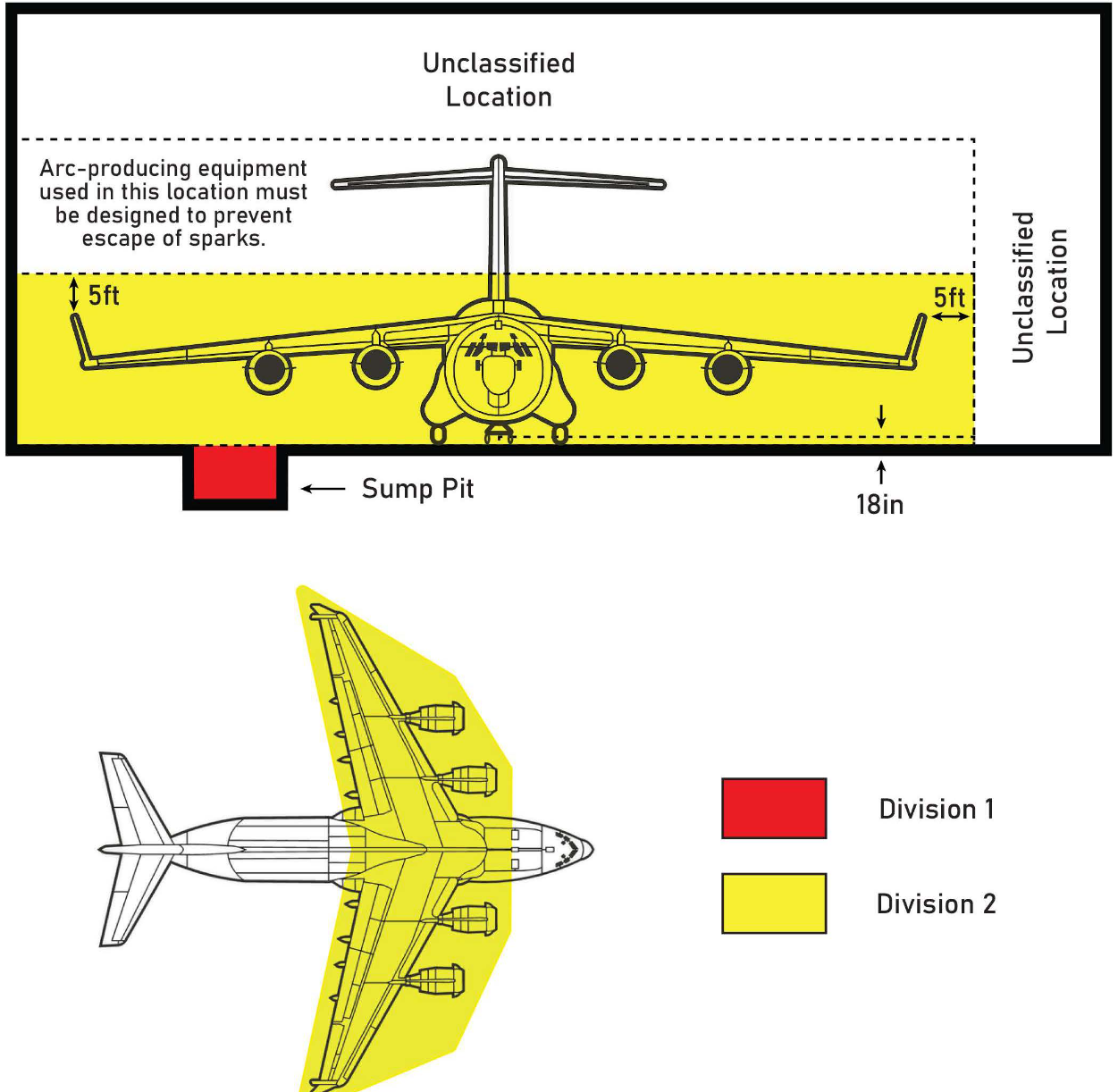
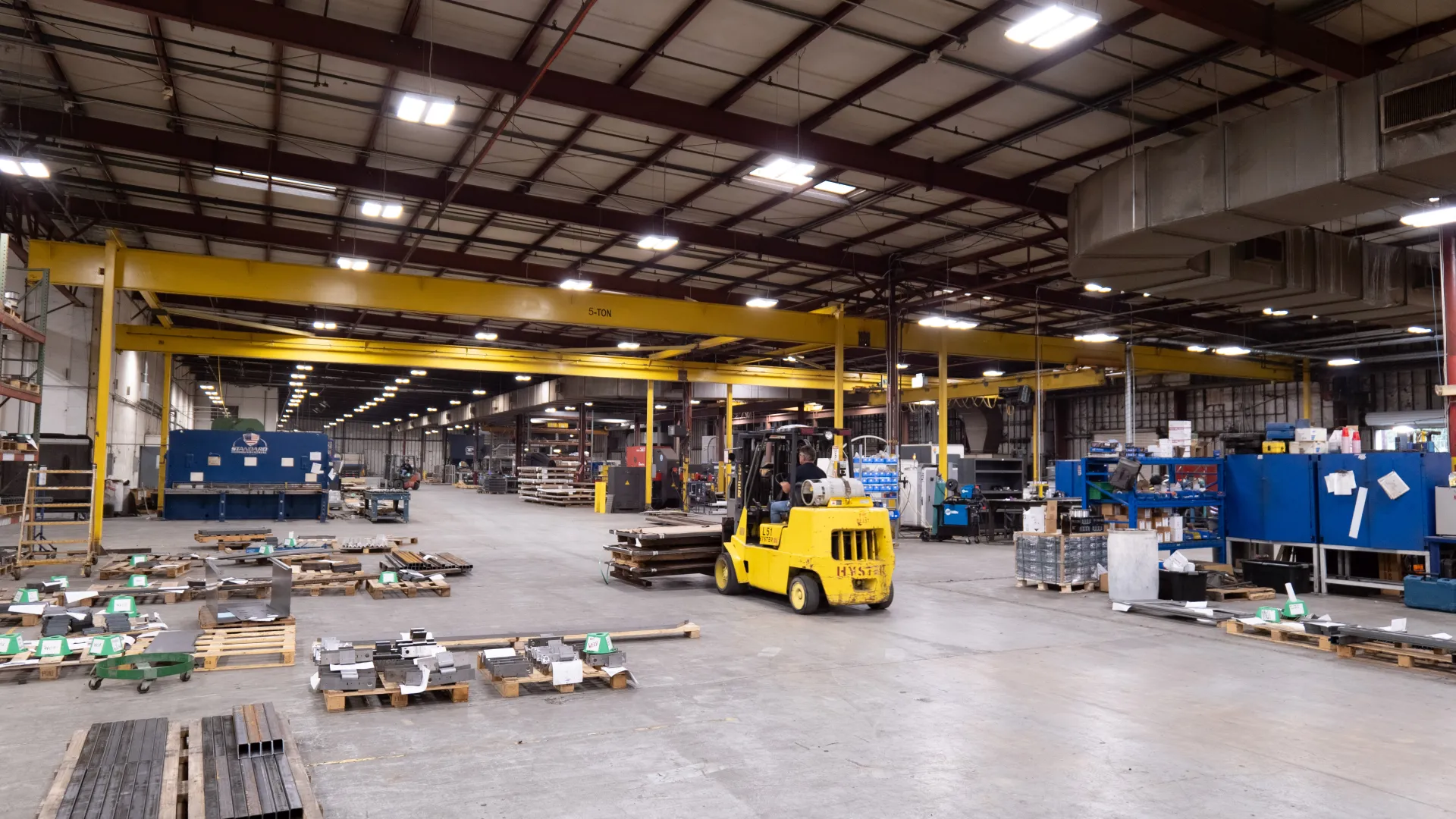
The Solution
To address these challenges, the USAF should consider adopting the civilian industry's more nuanced, zone-based classification system. Civilian aerospace projects typically differentiate between Class 1 Division 1 and Class 1 Division 2 areas based on the level of risk. For example, Airbus classifies the area from ground level to 18 inches above as Class 1 Division 2, while the area below ground level is Class 1 Division 1. The USAF's current practice of classifying entire hangars as ClDl, even in areas that companies like Airbus would leave unclassified, limits their ability to use advanced technologies like Twin Scan.
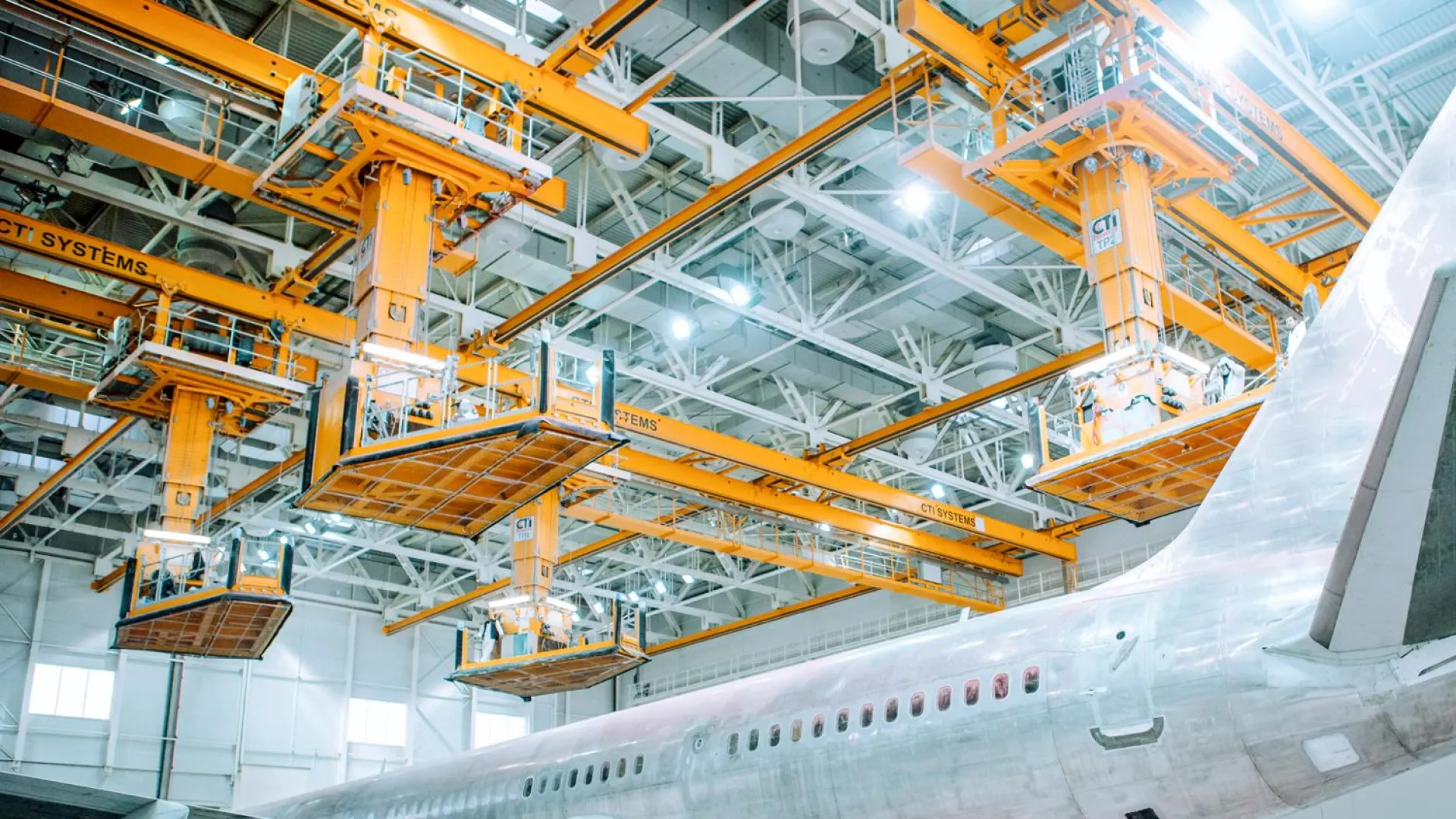
Twin Scan
Launched in 2020, CTI Systems’ Twin Scan Control technology allows a teleplatform to approach an aircraft with the very highest precision. The system utilises a full scan of an aircraft to restrict the travel speed of a teleplatform and will also bring the equipment to a controlled halt if it comes within a pre-set distance of the aircraft’s shell – thereby eliminating the risk of contact between the teleplatform and the aircraft at any time. Twin Scan Control technology is already in use at multiple hangars in Europe – to the full satisfaction of the operators.
The Prince VertiDock
The VertiDock redefines vertical stabilizer maintenance with its innovative semi-automatic working platforms, ensuring efficiency, precision, and operator safety. It is specifically designed to facilitate both maintenance and paint/depaint operations for aircraft, ensuring maximum efficiency and operator safety.
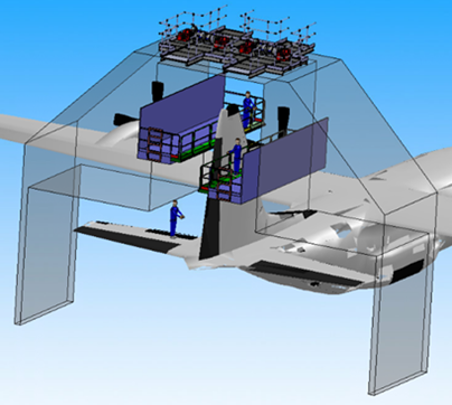
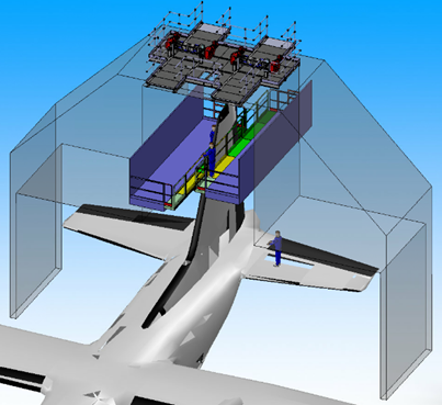
Key Features
- Independent or synchronous platform movement.
- Programmable height and slider positions for precise access.
- Sliders operate as a unit for faster work flow or independently as required for precise locations.
- Dual control options: fixed panel and remote control.
- Semi-automatic mode for streamlined operation.
- Easy access via stairs on stationary painting stands.
Specifications
- Capacity: 2 Person & Tools (550 Lbs.)
- Access Height: ±240 ft - Lifting Height: ±172 ft
- Lifting Speed: 1-26 ft/min - Bumper Speed: 1-13 ft/min
- Operating Voltage: 3 x 460V / 60 Hz
- Control Voltage: AC-120 V / 60 Hz
- Output Voltage: DC 24 V - Color: As defined.
- For C-130: At least 8 feet between platforms in open position to park aircraft.
- 6 inches of tolerance in Aircraft location off-center (Left or Right) - Sliders can meet (close gap entirely) at rear of vertical tail if rudder is removed (B50 typically).
Equipment on Platform
- 3 Explosion-proof Lamps per Platform
- 4 Sockets 120V/20A - Compressed Air
- Access to Paint Pot/Cleaning Solution
- Hot or Cold Water (Takeover point on hoist platform)
Safety
Operator safety is paramount with VertiDock. Key features include:
- A fall arrester fixation installed beneath the hoist platform.
- Every platform has an independent safety net below. This safety mechanism automatically stops the platform movement when elevated by a person or obstacle underneath.
- Hoists are always built with cable guides on the lifting drum and with Rollers, ensuring that the ropes cannot overlap. In addition, the system has an overload and underload detection. This means that the rope can never be unwound, even if the platform should touch down.
